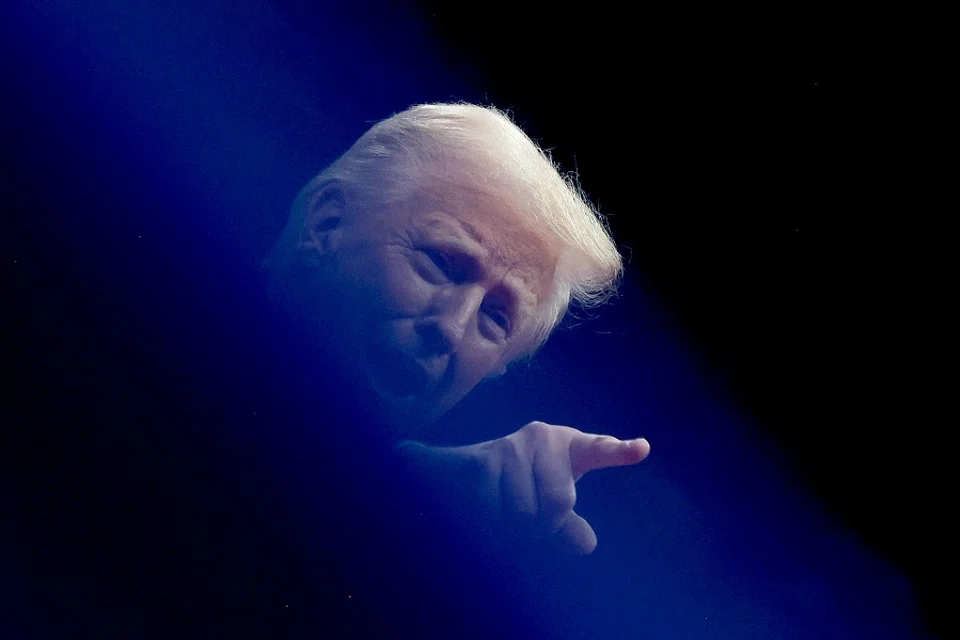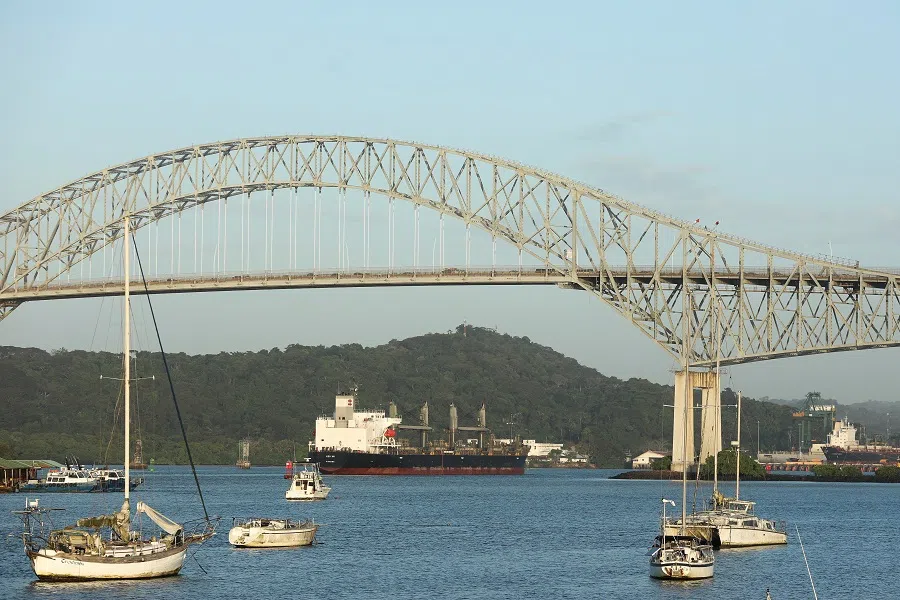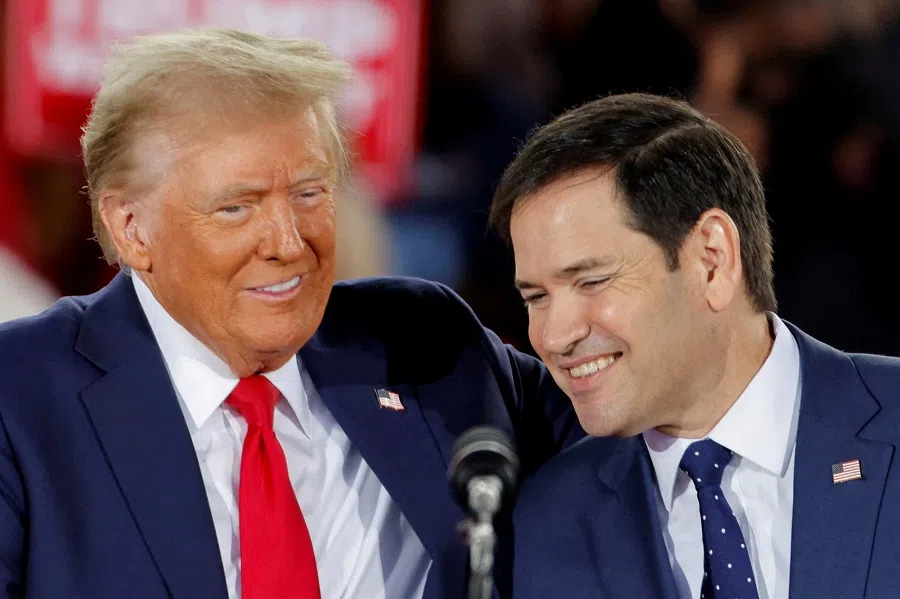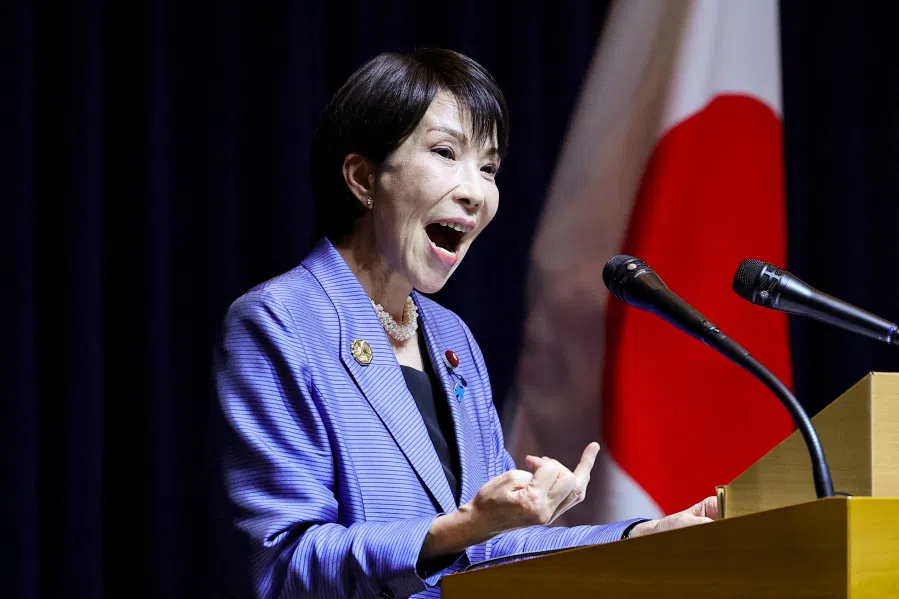A new age of US territorial expansion?
Donald Trump’s vision for the US includes several ambitious expansionist goals, including the purchase of Greenland from Denmark. Why has he set his sights on Greenland and how does he intend to acquire new territory? What are the implications of American territorial expansion? Lianhe Zaobao correspondent Sim Tze Wei tells us more.

After his 2024 re-election, US President Donald Trump floated three specific proposals for territorial expansion: purchasing Greenland, the world’s largest island; taking back the Panama Canal; and making Canada the 51st US state.
Which one is he most likely to achieve? They all seem challenging, but the one he wants the most is perhaps Greenland — during his first term in office, Trump had already hoped to make this deal, but was rejected by the Greenlandic government.
This time, Trump refused to rule out the use of force to seize Greenland, but did not specify what means he might employ. One possibility is that Greenland could first hold a referendum on independence, after which the US could make an offer to purchase it.
As for Panama, if the US really wanted to have a say in the control of the Panama Canal, it could pursue a negotiated shared management approach, rather than resorting to force. Given Canada’s heavy economic and trade reliance on the US, whether it formally becomes a US state is not that important anymore.
Expanding America and thereby enhancing his own legacy is a highly appealing political prize for Trump.

Greenland, located in the Arctic between the Arctic and Atlantic oceans, is an autonomous territory of the Kingdom of Denmark. Geographically, it is closer to the Americas than Europe; its capital Nuuk is nearer to New York City than Copenhagen.
Greenland has a total area of 2,175,600 square kilometres. If Trump successfully buys Greenland, the US land area would instantly increase from approximately 9.37 million square kilometres to 11.54 million square kilometres, making it the second-largest country in the world.
Although territorial expansion alone might not necessarily make America great again, Trump, who makes no secret of his expansionist views, undoubtedly believes that accomplishing what no other US president has managed would cement his legacy as one of the greatest presidents in American history. Expanding America and thereby enhancing his own legacy is a highly appealing political prize for Trump.
Historical precedents for territorial expansion
A century ago, purchasing islands to expand territory was not uncommon for the US. In 1803, the US purchased Louisiana from France, Alaska from Russia in 1867 and the Virgin Islands from Denmark in 1917.
In the 1860s, then-US President Andrew Johnson commissioned a report highlighting Greenland’s natural resources as a potential strategic investment for the US. In 1946, the Harry Truman administration made a secret offer of US$100 million to purchase Greenland, but Denmark rejected the proposal.
The similarity between Greenland, the Panama Canal and Canada is that they are located in the western hemisphere. By focusing specifically on these three areas, Trump’s intention to strengthen its waning influence in the western hemisphere is crystal clear.

The similarity between Greenland, the Panama Canal and Canada is that they are located in the western hemisphere. By focusing specifically on these three areas, Trump’s intention to strengthen its waning influence in the western hemisphere is crystal clear. Chinese and Western pundits have both noted that Trump’s actions are akin to a “New Monroe Doctrine”, or a Trumpian “Donroe Doctrine”.
This doctrine dates back around 200 years to 1823, when then US President James Monroe declared that the western hemisphere was an exclusive sphere of influence for the US, essentially proclaiming that the Americas belonged to America, with American continents under US control. Who would have thought that over 200 years later, the Monroe Doctrine — along with tariffs and territorial acquisitions — has once again become a core focus of a president at the apex of global power in the 21st century?
Although the western hemisphere and Latin America are likely to become focal points during Trump’s administration — as opposed to the intricately woven Indo-Pacific strategic alliance of the Biden era — China, a prominent Asian power, remains a primary adversary.
Greenland’s strategic significance
Voice of America quoted national security experts who believe that Greenland’s crucial geostrategic position and resource reserves make it an important asset within the US and NATO defence framework. However, in recent years, China has infiltrated Greenland through trade activities and may even expand its military presence there with Russia’s help in the future.
In essence, Trump wants to compete with China and Russia for control of the Arctic Circle.

Their analysis also stated that strengthening control over Greenland would help the US revive the historical policy legacy of “hemispheric defence” and resist the “aggressive advances of China and Russia in the Arctic region”. In essence, Trump wants to compete with China and Russia for control of the Arctic Circle.
Trump’s chosen secretary of state, Marco Rubio, along with former Democratic senator Bob Menendez, proposed the western hemisphere Security Strategy Bill as early as 2022, pointing out that the influence of China and Russia in Latin America posed a threat to US national security interests, and were the greatest threat to the western hemisphere.
The US has long viewed the Latin American region as its backyard, but China has been steadily establishing and securing its presence there, replacing the US as the main trade partner and infrastructure investor in many Latin American countries. In May 2017, the Latin American region was officially incorporated into China’s Belt and Road Initiative (BRI) framework. In November of the same year, Panama became the first Latin American country to join the BRI. By 2024, Brazil and China had joined hands, proclaiming a “shared future for the China-Brazil community”.
Since this is Trump’s second term, he cannot run again in 2028 without violating the US Constitution. This means he only has four years to expand the US and make a name for himself.

If Trump successfully purchases Greenland, or offers it a Compact of Free Association — similar to those with Micronesia, Palau and the Marshall Islands — that allows Greenland to maintain sovereignty but rely on the US economically and militarily, the global order will be relatively less disrupted.
The “golden age” Trump dreams of would be a world where the strong prey on the weak — a return to the law of the jungle.
A dangerous legacy
However, using force to seize Greenland would completely undermine the international order based on the principles of democracy, free trade, international cooperation and the rule of law that the US proposed post-WWII. It would also reverse nearly a century of US diplomatic discourse. The “golden age” Trump dreams of would be a world where the strong prey on the weak — a return to the law of the jungle. In such an atmosphere, regional powers and strong nations might find excuses to expand their spheres of influence, severely endangering the survival of smaller countries.
It is difficult to imagine what the world will look like after four years of Trump’s “chaos-inducing” governance. After his departure, Trumpism and its impact are likely to be inscribed into the history textbooks for the 21st century and be studied extensively. Not because Trump was great, but because of the shockwaves he sent across the world and because he challenged the concepts of democracy and the rule of law. The impact of these shockwaves may very well cause damage that persists for years, if not decades.
This article was first published in Lianhe Zaobao as “让特朗普再次伟大?”.





